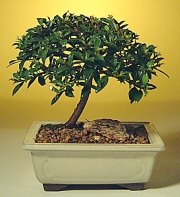Greenhouse Gardening For Beginners
If you’re new to greenhouse gardening, you’re in for an exciting adventure. Imagine controlling your plant’s environment and seeing it thrive all year round, regardless of the weather outside. It’s like a little paradise you create with your own hands.
One of the biggest perks of greenhouse gardening is the ability to extend your growing season. Whether you’re dodging the chill of winter or the harsh sun of summer, a greenhouse offers a stable environment. This allows you to grow a wide variety of plants that might struggle outdoors in your climate. Beginning a greenhouse and growing your own plants is awesome indeed.
“Here’s a little transparency: Our website contains affiliate links. This means we may receive a small commission if you click and make a purchase. Don’t worry, there’s no extra cost to you. It’s a simple way you can support our mission to bring you quality content.”

The best way to start as a beginner is to make everything simple. There are different kinds of greenhouses, from small DIY setups to fancy ones you can buy pre-made. They can be tailored to your space and climate needs. Think about the size, materials, and ventilation systems that best suit your garden.
Before getting started, you need some basic tools. Shelving for maximizing space, a thermometer to keep track of temperature, and perhaps a little fan for air circulation. Getting these little things right makes a big difference, helping you create your green oasis.
Start by learning the basics right from your first step. With the right knowledge and a spirit of adventure, starting a greenhouse garden becomes a rewarding hobby. You’ll soon find yourself deep in learning about plants, climate control, and the science behind it all. Once you see your first plant flourish, you’ll know it’s totally worth it!
Planting Essentials: What You Can Grow
Choosing the right plants for your greenhouse is key to making your gardening journey a success. It’s all about picking plants that are easy to manage and rewarding when you’re starting out. Leafy greens like lettuce, spinach and herbs like basil and parsley are fantastic. They grow fast, don’t take up much space, and nothing beats fresh greens straight from your greenhouse.
 Beginner’s Guide to Greenhouse Gardening
Beginner’s Guide to Greenhouse Gardening
But if you’re up for it, why not try a few fruits? Strawberries, tomatoes, and even cucumbers can thrive in greenhouses. And who doesn’t love munching on a fresh, juicy strawberry? Fruits can demand more attention, but watching them grow under your care is an absolute joy.
Seasonal planting is another thing to watch. It helps to harmonize your greenhouse environment. Cool-season crops can start early and keep going when the nights get nippy, while warm-season choices like peppers can bask in the summer warmth. Matching your plant choices to the season ensures they get what they need to grow happily.
As you get comfortable, remember the unique beauty of growing your fruit. With the right care, you can enjoy tasty tomatoes and strawberries and maybe even exotic options like figs.
Starting simple and familiarizing with a few robust plants will set the stage for more adventurous gardening endeavors. As you gain confidence, you’ll find yourself exploring greater diversity within your greenhouse space.
Optimizing Greenhouse Setup: Containers and Watering
Selecting the right containers in your greenhouse can make things easier. The right sort of containers influence your plants’ growth. Plastic pots, clay pots, raised beds, and even hanging baskets each come with their own set of advantages. You might find that mixing and matching different types work best for the variety of plants you’ll be nurturing.

For many, container gardening in a greenhouse offers flexibility that traditional gardening can’t touch. Using containers, you can quickly move plants around to catch the best light or shift them if they need more shade. Plus, it’s excellent for managing soil quality and ensuring your plants get the necessary nutrients.
Setting up a watering system is another pillar in efficient greenhouse management. Whether you go for a simple watering can or install a drip irrigation system, consistency is key. Automated systems can save loads of time and ensure your plants get just the right amount of water, even when you’re busy.
High-tech solutions are out there too, like hydroponic systems that skip the soil entirely or self-watering pots that use a reservoir system. These can take some of the guesswork out of meeting your plants’ hydration needs. Starting with basic drip systems or even just staying attentive with a simple hose can work wonders as well.
As you get your setup going, being mindful of water usage helps too, both for the health of your plants and your water bill. Knowing when and how much water can become your little science, and over time, you’ll get the hang of what works best for your plants.

Achieving Year-Round Greenhouse Success
Managing a greenhouse year-round might seem like a tall order, but with some smart thinking, it’s manageable. The trick lies in understanding how seasons affect your plants and adjusting accordingly. Insulating your greenhouse with materials like bubble wrap can help maintain a stable temperature during cooler months.
It’s also about picking varieties that thrive in different temperatures. In winter, stick with hardy greens and root vegetables while saving tender stuff like tomatoes for the warmer months. Success often comes down to planning and rotating crops to maximize use of your space year-round.
 Sunnydaze Galvanized Steel Raised Garden Bed
Sunnydaze Galvanized Steel Raised Garden Bed
Keeping things going throughout the seasons might mean tweaking how you heat your greenhouse, too. Some folks use electric or propane heaters, but sometimes, it’s all about capturing natural heat. Simple things, like placing water barrels that absorb heat during the day and release it at night, can make a surprising difference.
One of the items to consider is airflow. Winter can make greenhouses stuffy; a little greenhouse fan or simply cracking a window can keep the air fresh and plants happy. You’ll soon find that attending to these finer details becomes part of your daily routine, making your year-round gardening a rewarding endeavor.
Integrated Pest Management in Greenhouses
Pests can be the uninvited guests in your greenhouse, and they sure know how to crash a party. It’s not just important to manage them; it’s a must for keeping your plants flourishing. You’ll often find greenhouse environments prone to certain pests, like aphids or spider mites, sneaking in for a feast.

Natural pest control methods work wonders and are kinder for plants and the planet. Ladybugs, for example, are amazing pest deterrents. They munch on aphids and can help keep those little pesky pests under control. There’s also the option of using neem oil, a natural pesticide effective against many common pests without harming your plants. Flowering Brush Cherry Bonsai Tree
Flowering Brush Cherry Bonsai Tree
Getting on board with integrated pest management (IPM) is a great idea. This approach balances pest control methods, using prevention first and only resorting to stronger actions when necessary. With IPM, you can tailor your strategy to the pests you’re dealing with, making it a smart and efficient way to keep your plants safe.
Preventing pests, in the first place, often makes life easier. Keeping your greenhouse clean and tidy removes potential breeding grounds. Regular inspection of your plants for any signs of unwelcome visitors helps catch problems early before they can escalate. Examine leaves and plants for signs of infestation and then, act accordingly to keep it under control.
With a bit of patience and regular attention, managing pests while maintaining the health of your greenhouse becomes less of a chore and more of a manageable aspect of your gardening hobby. Soon enough, you’ll be a pro at spotting potential problems before they get out of hand.

Having a greenhouse can certainly prolong the growing season, specially if you have cold and snowy winters where frost and ice can kill your vegetables. But a greenhouse is also a great way to protect plants during the very hot summer months. As a beginner, this is a very helpful guide to get you started on growing fruit and vegetables in a greenhouse.
And the greenhouse doesn’t need to be big. It can give you the chance to grow your own food, whether in the ground, or in grow beds or containers.
This blog post is a great introduction to greenhouse gardening for beginners! I love how it emphasizes the adventure and excitement of controlling your plant’s environment. The section about starting with simple tools and plants is especially helpful. Lettuce and herbs are perfect for getting started, and I agree that there’s nothing better than fresh greens straight from your greenhouse. The flexibility of container gardening is a great point too; being able to move plants around based on their needs makes greenhouse gardening so much more manageable.
The tips on managing a greenhouse year-round and dealing with pests were super practical as well. I hadn’t thought about using water barrels to absorb heat or incorporating natural pest control like ladybugs, but those seem like great, eco-friendly options. This post strikes a good balance between being informative and encouraging, making greenhouse gardening feel approachable for anyone, regardless of experience level. Overall, a very motivating read!
Hello,
This post was such an inspiring read for someone new to greenhouse gardening like me! The idea of creating a mini paradise and extending the growing season all year round is so motivating. I love how the article breaks down the process into simple, manageable steps, making it feel totally doable. Starting with easy plants like lettuce and herbs is a great tip—who does not want to enjoy fresh greens straight from the greenhouse?
The practical advice about containers and setting up a watering system makes a lot of sense too. It is awesome to learn about different options like drip irrigation or even hydroponics for the future! Plus, the tips on using natural pest control methods, like ladybugs and neem oil, were super helpful. I can definitely see myself coming back to this guide as I embark on my own greenhouse gardening journey.
Thanks for such a comprehensive and encouraging post!